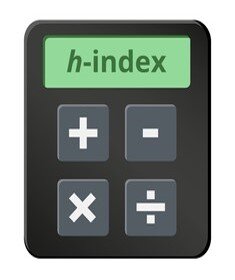معرفه معامل الـ h-index الخاص بک عبر Google Scholar


معامل الـ h-index هو مقیاس عددی یجمع بین إنتاجیه الباحث وعدد الاستشهادات التی حصلت علیها أبحاثه. إذا کان لدى الباحث معامل h مقداره "h"، فهذا یعنی أن لدیه "h" منشورات حصل کل منها على "h" استشهادات أو أکثر.

یحتوی Google Scholar على مجموعه واسعه من المنشورات الأکادیمیه، بما یشمل المجلات والمؤتمرات والرسائل الجامعیه، مما یجعله مناسبًا للباحثین من مختلف التخصصات.
على عکس قواعد البیانات المدفوعه، فإن Google Scholar متاح مجانًا للجمیع، مما یجعله خیارًا مثالیًا للباحثین الذین قد لا تتوفر لدیهم اشتراکات مکلفه.
یتمیز Google Scholar بواجهه استخدام بسیطه وأدوات بحث فعاله، مما یسهل تتبع المقالات وحساب عدد الاستشهادات بسهوله ودون الحاجه لمهارات تقنیه معقده.
یشمل Google Scholar مصادر متنوعه مثل أوراق المؤتمرات والمستودعات المؤسسیه، مما قد یؤثر على دقه تقییم الاستشهادات.
قد تختلف أعداد الاستشهادات فی Google Scholar مقارنهً بقواعد بیانات أخرى بسبب اختلاف الخوارزمیات أو إدراج الاستشهادات الذاتیه.
لا یوضح Google Scholar منهجیات الفهرسه أو تفاصیل المصادر بدقه، مما قد یصعّب تقییم موثوقیه البیانات.
یختلف معامل الـ h-index بین التخصصات الأکادیمیه بسبب أنماط النشر المختلفه، لذا من المهم مقارنه النتائج ضمن نفس المجال.
یشمل Google Scholar الاستشهادات الذاتیه، لذلک ینبغی على الباحثین الانتباه لعدم المبالغه فی الاستشهاد الذاتی.
یقوم Google Scholar بتحدیث بیاناته باستمرار. لذا من المهم مراجعه معامل h بشکل دوری للتأکد من دقته.
یُعد Google Scholar أداه مجانیه ومناسبه لحساب h-index، ویتمیز بتغطیته الواسعه وسهوله استخدامه. ومع ذلک، یجب أن یکون الباحثون على درایه بحدوده مثل إدراج المصادر غیر المُحکّمه والتفاوت المحتمل فی عدد الاستشهادات. ینصح بمراجعه البیانات مع قواعد بیانات أخرى للحصول على تقییم أکثر دقه لمعامل التأثیر. من خلال الفهم الجید لمزایا وقیود Google Scholar، یستطیع الباحثون استخدامه بفعالیه لتقییم أثر أبحاثهم.
أکادیمیه سیتا
أکادیمیه سیتا هی شریکک الموثوق لتحقیق معامل h-index مرتفع عبر دعم نشر مقالاتک العلمیه. یضم فریقنا خبراء فی البحث العلمی والنشر یفهمون أهمیه تحقیق معامل h-index قوی لإبراز أثر أبحاثک.
نقدّم لک خدمات متکامله تشمل:
تحریر المخطوطات الأکادیمیه
اختیار المجلات المناسبه للنشر
تقدیم الإرشاد لتعزیز فرص الاستشهاد بأبحاثک
بخبرتنا العمیقه، نساعدک على اجتیاز عملیه النشر بنجاح وضمان نشر مقالاتک فی مجلات علمیه مرموقه تسهم فعلیًا فی رفع معامل تأثیرک.
تواصل معنا الیوم لمعرفه المزید حول کیف یمکننا مساعدتک فی تحقیق أهدافک البحثیه وزیاده h-index الخاص بک.

إذا کان لدیک أی أسئله، استفسارات، أو ترغب فی معرفه المزید عن خدماتنا، فلا تتردد فی التواصل معنا. فریقنا المخصص مستعد لمساعدتک.